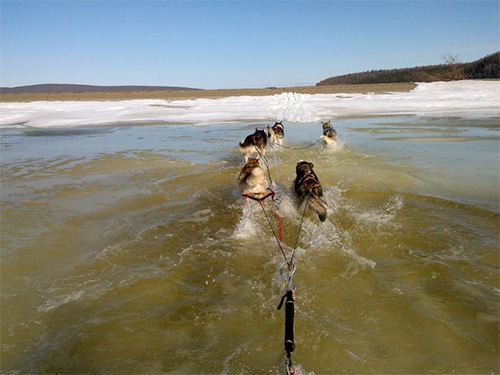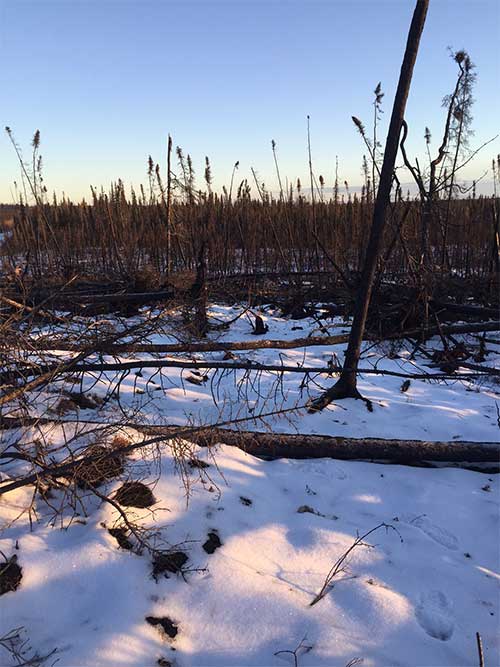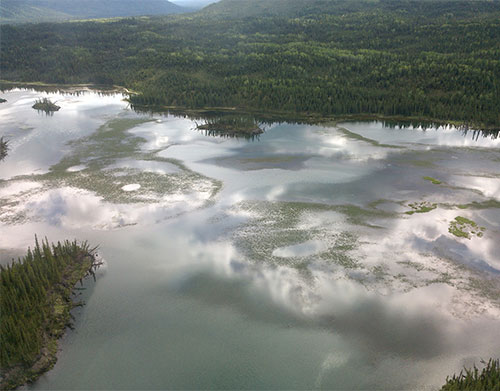
Climate change limits access to subsistence resourcesBy JEFF RICHARDSON
November 17, 2016
Those results, gathered from University of Alaska Fairbanks-led interviews from four rural indigenous communities, were published last month in the science journal Climatic Change. Of the 47 important relationships identified between climate change and the availability of subsistence resources, 60 percent focused on hunter access. That far outpaced resource distribution (28 percent) and wildlife abundance (13 percent) among the responses.
Early breakups, which can challenge dog teams such as this one crossing Lake Minchumina in central Interior Alaska, are among the climate changes to which subsistence hunters are being forced to adapt.
“It’s just a more unstable and unpredictable environment now,” said Brinkman, an assistant professor at the UAF Institute of Arctic Biology. The findings may emphasize the need for a new focus by resource managers looking at challenges for subsistence hunters in the North. Much of the research emphasis has previously been on how climate change could affect key wildlife populations, such as caribou, moose and sea mammals.
Wildfire-killed trees, such as these near Nulato in western Interior Alaska, block trails when they fall, a climate change-related challenge for trappers.
Tom Paragi, a wildlife biologist with the Alaska Department of Fish and Game, said that such findings could significantly influence management policies focused on abundance. He agreed that the ability to reach important hunting areas is a key consideration as the state warms. “Scientists have been trying to forecast abundance based on climate scenarios for about a decade, but now we’re considering access a lot closer in management programs,” he said. The data was collected starting in 2010, when indigenous hunters were interviewed about their perception of climate-driven trends in the environment. Those 71 interviews pointed to a common view in all four villages that reaching subsistence resources has become more challenging. “I don’t think it’s a regional issue,” Brinkman said. “I think it’s something we can extrapolate across the state.”
Aquatic plants, spreading in a warming climate, can impede boats in lakes such as this one near Tok in eastern Interior Alaska.
Researchers want to better understand how often such problems occur, since the ability to make adaptations will be depend on whether access is a concern occasionally or regularly. “A lot of climate change stuff is out of local control, but if they’re aware of the trajectory and patterns of change then they can better adapt,” Brinkman said. Along with Brinkman, the research team included UAF researchers F. Stuart Chapin III, Gary Kofinas and T. Scott Rupp. Winslow Hansen of the University of Wisconsin and Shauna BurnSilver of Arizona State University, who were both previously affiliated with UAF, also contributed to the study.
This column is provided as a public service by the University of Alaska Fairbanks.
Representations of fact and opinions in comments posted are solely those of the individual posters and do not represent the opinions of Sitnews.
|
||


